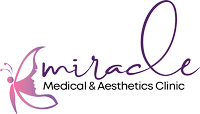Overview
Facial fillers are substances injected into the skin to smooth wrinkles and make them less noticeable. Injection of a facial filler is generally an outpatient procedure that’s done with numbing medication. The procedure takes up to an hour.
You might have mild discomfort, bruising and swelling for up to a week. After the swelling goes down, you might need a touch-up injection for best results. How long the effect lasts depends on the type of wrinkle and filler, among other factors.
Facial fillers, or soft tissue fillers, generally aren’t used for people who have suppressed immune systems or who take blood-thinning medications (anticoagulants).
Types of facial fillers
Facial fillers include:
- Hyaluronic acid (Restylane, Juvederm, others). This natural component of the skin’s connective tissue is the most common filler used for wrinkles. The results typically last 6 to 12 months.
- Calcium hydroxylapatite (Radiesse). This filler is used to contour the jaw line, restore volume in the cheeks, and treat deeper wrinkles and skin folds. The results last up to a year when used for contouring and 3 years when used to fill wrinkles.
- Fat grafting. With this method, fat is removed from the lower abdomen or other area through liposuction. It is then injected through small incisions into the cheek, temple, lips or forehead. The effects might be permanent. But achieving the desired results usually requires more than one session as well as overfilling the site because the body reabsorbs some of the fat.
- Permanent soft tissue filler (Bellafill). This filler is used to smooth deep wrinkles around the mouth. The body can’t absorb this type of filler, so it doesn’t require reinjection. Permanent soft tissue filler generally isn’t recommended as a first-time facial filler treatment.
- Poly-L-lactic acid (Sculptra). This product is used to restore facial volume lost due to aging or illness. Two or three sessions are usually required. The effects last up to two years.
What are Injectable Dermal Fillers?
Dermal fillers are gel-like substances that are injected beneath the skin to restore lost volume, smooth lines and soften creases, or enhance facial contours. More than 1 million men and women annually choose this popular facial rejuvenation treatment, which can be a cost-effective way to look younger without surgery or downtime.
How Can Dermal Fillers Enhance My Appearance?
While dermal fillers are casually known as “wrinkle fillers,” they can do much more than just smooth out wrinkles, although they are excellent at this too! Here are a few of the common issues dermal fillers can help address:
- Smooth out lines around nose and mouth (a.k.a. marionette lines, smile lines, and parentheses)
- Enhance & restore volume to sunken cheeks or temples
- Diminish vertical lip lines
- Plump & enhance the lips
- Smooth out a chin crease
- Improve symmetry among facial features
What are Fillers Made With?
There are a variety of FDA approved filler products that cosmetic surgeons use. In general, fillers are categorized by the substance they are made from. A note for your safety: always make sure that you are receiving FDA approved, brand name fillers, which are only available through a licensed physician, such as a board certified cosmetic surgeon.

